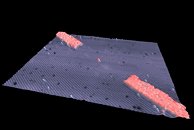Common Platform Transitions to Adopt FinFET 3D Transistor with 14 nm Fab Process
Common Platform, a consortium of three major silicon fabrication companies: IBM, Samsung, and GlobalFoundries, met at their 2012 Technology Forum, where they announced their intention to transition to FinFET 3D transistor technology, but only with the 14 nanometer (nm) silicon fabrication process. Chips on this process will be built in the 2014~2015 time-frame. 3D transistors is a technology pioneered by Intel, which provides space-optimized, energy-efficient transistors on a nano-scale.
FinFET transistors will be combined with Fully Depleted Silicon-On-Insulator (FD-SOI) to offer extremely high transistor densities, with lower chip power. FD-SOI overcomes the limitation of current partially-depleted SOI (PD-SOI) technology, of lower-yields due to the pressure required for SOI insulation, which nears the breaking-point of strained silicon transistors. FinFET tech will be combined with chip-stacking technology, which helps make devices with better use of available PCB footprint.
FinFET transistors will be combined with Fully Depleted Silicon-On-Insulator (FD-SOI) to offer extremely high transistor densities, with lower chip power. FD-SOI overcomes the limitation of current partially-depleted SOI (PD-SOI) technology, of lower-yields due to the pressure required for SOI insulation, which nears the breaking-point of strained silicon transistors. FinFET tech will be combined with chip-stacking technology, which helps make devices with better use of available PCB footprint.















